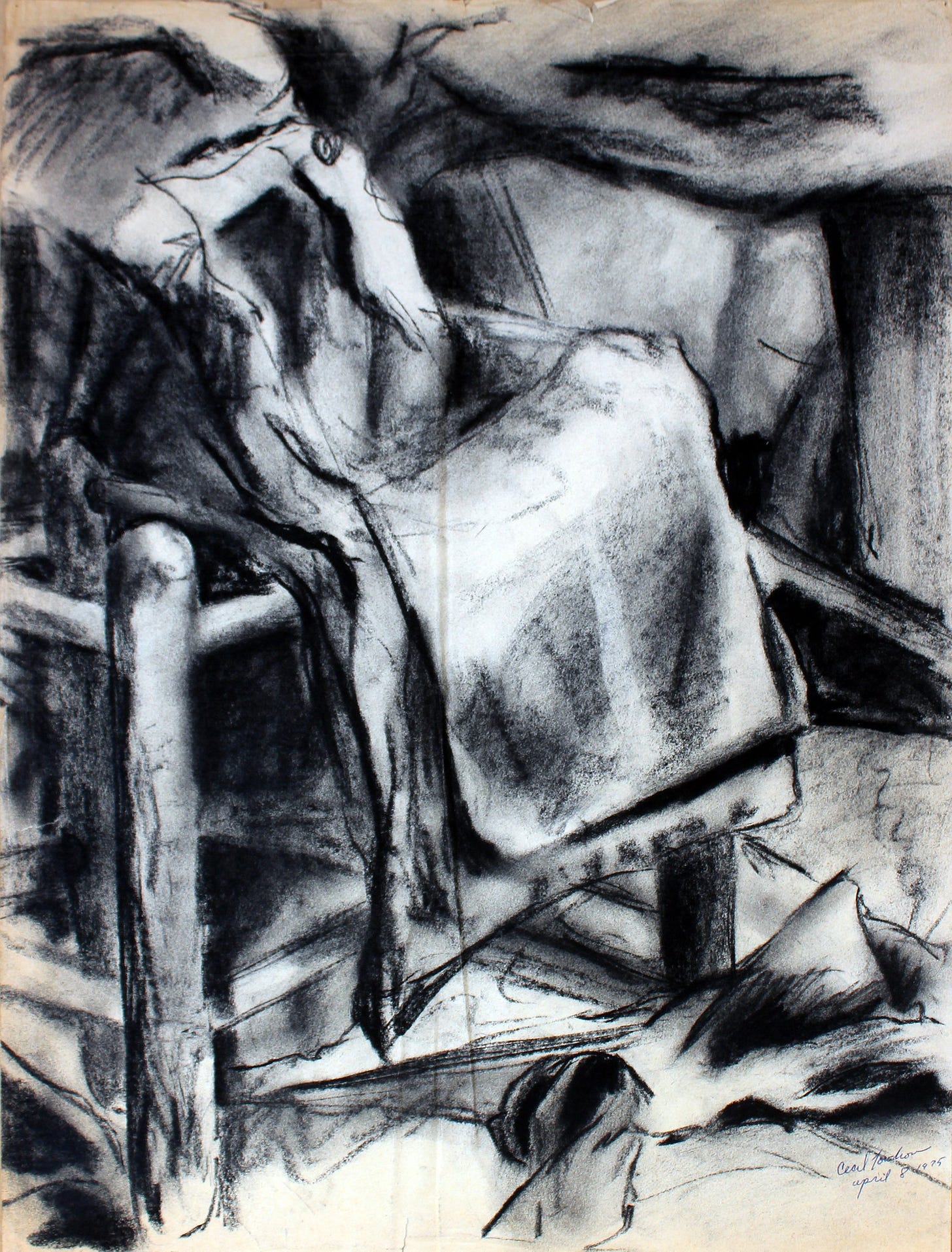“The main thing artists do is create problems for themselves and then spend their lives coming up with solutions for those problems.”
Something one of my drawing teachers told us in 1975
I must have been impressed by the humor of that insight because I still remember it. And yes, that is a true statement. That is what I have been doing for 50 years now - creating my own problems and then figuring out how to solve them and as an artist you can and will come up with an endless number of possible problems to tackle. What problems you decide to solve is a big part of your creative voice. After all, if you have an artistic voice, it is for saying things about the problems you are solving for yourself.
I graduated from high school in the spring of 1974 and went straight to Saint Louis Community College at Flo Valley in the Fall of 1974. I was 18 years old, my parents were divorced and having a mom with three boys, we were poor and community college was the only thing in financial range especially with new at the time federal Basic Educational Opportunity Grants (BEOG) now called Pell Grants. I worked toward an associate degree in fine art.
I got the most training in drawing with four semesters of drawing and four semesters of figure drawing. I have always felt that drawing is my core skill and that the study of drawings gives the most intimate insights into the masters of the past.
I guess being and living as an artist was always my number one goal in life. I don’t think I ever really considered anything else except some sort of work to make enough money to keep making art. I really am not sure why being an artist was so important to me. I’ll have to contemplate that at some point... Or not.
Working for money, I was mostly a gas station attendant, a waiter at restaurants or a house painter through my 20’s and early 30’s and a couple of years in there as a foster parent. That part I consider my two years of active duty.
“You’re going to have to make a thousand crappy drawings before you make anything worth saving. So, let’s get those out of the way first.”
Something my first drawing teacher told us in 1974
When you are 18 years old, a thousand drawings seems like a lot of drawing. Based on that theory, you should be pretty good after about 10 18 x 24 inch newsprint drawing pads with 100 sheets each. When you think about it like that, maybe it isn’t so bad. Still, if on average that is about an hour per drawing, that’s about 1,000 hours. Let’s see, broken down to 40-hour weeks that is actually only about a half a year. Hum… almost no effort at all.
I remember in the drawing class when we would turn in our drawings from class and the teacher would look them over and, with some scissors, cut out the little bits that he thought showed promise and threw the rest in the trash can. He would then say, work more like this and maybe give some minimal indication of what he thought was worth pursuing in these leftover tidbits. I think it was his way of showing us not to be precious about our work. Everything is just practice for the next thing.
My secret plan is to eventually make the posts in the Touchonian a book about the Creative Lifestyle for Artists. You, my favorite readers, are privy to the book in it’s formation. I would really appreciate your help by making comments, asking questions and suggesting topics I should explore and write about. It is hard for me to dream up what artists need and want to know to keep going and keep creating. I have fifty years of figuring out all of the details I needed to become self-sustaining as an artist and want to share enough insight to smooth the path for others facing this complicated, daunting task of being a self-sustaining artist. I know from experience it can feel overwhelming, unreachable and even depressing. So feel free to say or ask something! Thanks in advance.
Thanks for reading. This is a completely reader-supported publication. If you’d like to support my work, buy my books and/or become a paid subscriber
What do you think? Comment below.




Hi Cecil ,
I have a suggestion for your artist guide book you mentioned . I am a professional artist like yourself , same age …for years I have contacted galleries I felt were a good fit for my work , and occasionally had a reference from a fellow artist to contact them . I feel that my work is mature and interesting , I have quite a bit of inventory and have good credentials . After years of this , I have gained representation from one rather unambitious gallery . Any advice as to how to break through the gallery wall ?
Thank you , Amelia Currier
I’d love to know how you silence or dismiss or embrace the negative mind that tells you “this is crap, don’t start.” “Oh, this turned out mediocre, what are you gonna do with it?” And then, we’ll, I guess like your art teacher, what DO you do with the mediocre stuff? Do you cut out the decent parts and expand on them? How many mediocre pieces do you keep in a year? .